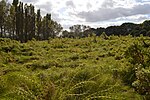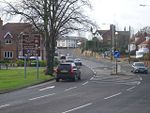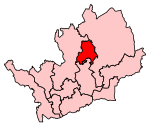Aston, Hertfordshire

Aston is a village and civil parish in the East Hertfordshire district of Hertfordshire, England. According to the 2001 census it had a population of 844, increasing to 871 at the 2011 Census. Located on a ridge between Stevenage and the Beane Valley, Aston is a 10 minutes drive from the A1(M). A mile north of Aston lies Aston End, a hamlet which has strong social and geophysical ties with the village. Hooks Cross, another hamlet in the parish, straddles the A602, Stevenage to Hertford road. Aston has many clubs, societies and interest groups, hosting a successful annual school fete. During the reign of Edward the Confessor (1024–66), the manor of "Estone" was held by three vassals of Stigend, Archbishop of Canterbury. Their names are not known but some land is recorded as that of Wulf the Dane.
Excerpt from the Wikipedia article Aston, Hertfordshire (License: CC BY-SA 3.0, Authors, Images).Aston, Hertfordshire
East Hertfordshire Aston
Geographical coordinates (GPS) Address Nearby Places Show on map
Geographical coordinates (GPS)
| Latitude | Longitude |
|---|---|
| N 51.888055555556 ° | E -0.15166666666667 ° |
Address
SG2 7EJ East Hertfordshire, Aston
England, United Kingdom
Open on Google Maps








